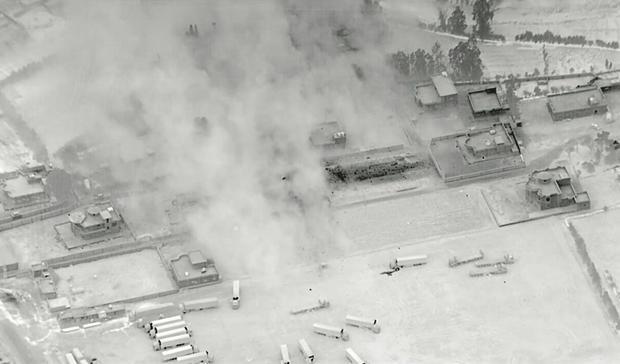US carries out airstrikes in Iraq and Syria
By Eric Schmitt
WASHINGTON — The United States carried out airstrikes early Monday (28) morning in Iraq and Syria against two Iranian-backed militias that the Pentagon said had conducted drone strikes against US personnel in Iraq in recent weeks, the Defence Department said.
“At President Biden’s direction, US military forces earlier this evening conducted defensive precision airstrikes against facilities used by Iran-backed militia groups in the Iraq-Syria border region,” the Pentagon spokesperson, John F. Kirby, said in a statement.
Kirby said the facilities were used by Iranian-backed militias, including Kata’ib Hezbollah and Kata’ib Sayyid al-Shuhada, to store arms and ammunition for carrying out attacks against places where Americans were located in Iraq. There were no immediate reports of casualties, but a military after-action review is ongoing, Pentagon officials said.
The strikes were the second time that Biden has ordered the use of force in the region. The United States carried out airstrikes in eastern Syria in late February against buildings belonging to what the Pentagon said were Iran-backed militias responsible for attacks against US and allied personnel in Iraq.
The latest strikes were carried out by US Air Force fighter-bombers based in the region.
Pentagon planners have been gathering information for weeks on the sites and militia networks that use them, US officials said Sunday (27). Defence Secretary Lloyd Austin and Gen. Mark Milley, chairman of the Joint Chiefs of Staff, briefed Biden on attack options early last week, and Biden approved striking the three targets, the officials said.
The strikes were carried out a little more than a week after Iran elected a hard-liner, Ebrahim Raisi, as its next president.
The military action also came as the negotiations intended to bring the United States and Iran back into compliance with an international nuclear accord have reached a crucial juncture. President Donald Trump pulled the United States out of the accord in 2018, and Biden has been seeking to revive it.
On Sunday, Secretary of State Antony Blinken discussed the negotiations on the nuclear deal with Israel’s foreign minister, Yair Lapid, who said Israel had “serious reservations” about the accord, which would ease sanctions on Iran in return for limits on its nuclear program.
Earlier this month, the Biden administration blocked access to myriad websites linked to Iran after the nation held a presidential vote to install Raisi, a close ally of the clerical government’s supreme leader, as its top elected official.
Pressure has been building for weeks from Democrats and Republicans in Congress, and from some of Biden’s top advisers and commanders, to retaliate against the threat posed by the drones to US diplomats and the 2,500 US troops in Iraq who are training and advising Iraqi forces.
US officials said the strikes — against two targets in eastern Syria and a third just across the border in Iraq — were carried out about 1:00 a.m. Monday local time by a mix of Air Force F-16s and F-15Es based in the region.
The fighter-bombers dropped multiple bombs — 500-pound and 2,000-pound satellite-guided munitions — on each of the three structures. US officials said the militias used the sites targeted in Syria mainly for storage and logistics purposes; the site hit in Iraq was used to launch and recover the armed drones, which officials said were either made in Iran or used Iranian technology.
Michael P. Mulroy, a former CIA officer and top Middle East policy official at the Pentagon, has warned that with the technology provided by Iran’s Quds Force — the foreign-facing arm of Iran’s security apparatus — the drones are rapidly becoming more sophisticated at a relatively low cost.
“This action should send a message to Iran that it cannot hide behind its proxy forces to attack the United States and our Iraqi partners,” Mulroy said.
-New York Times


